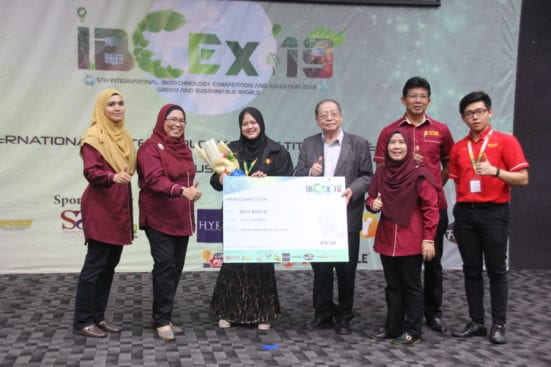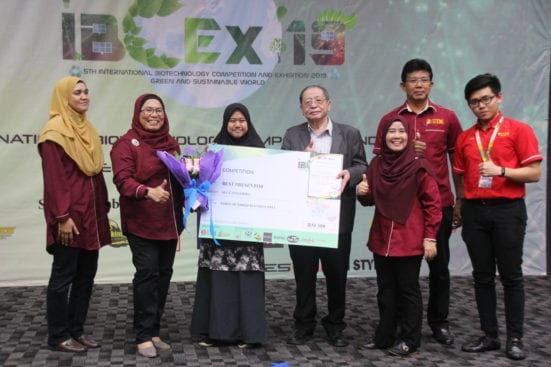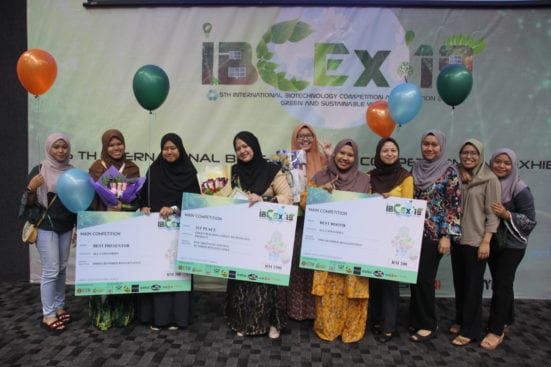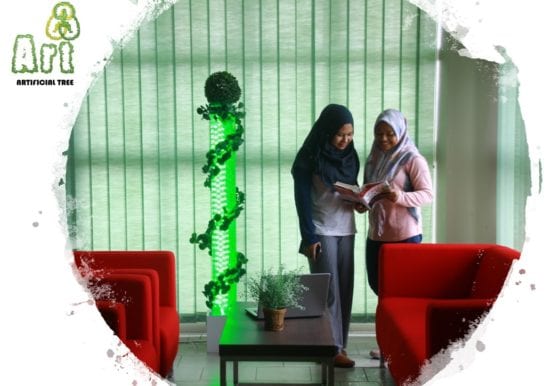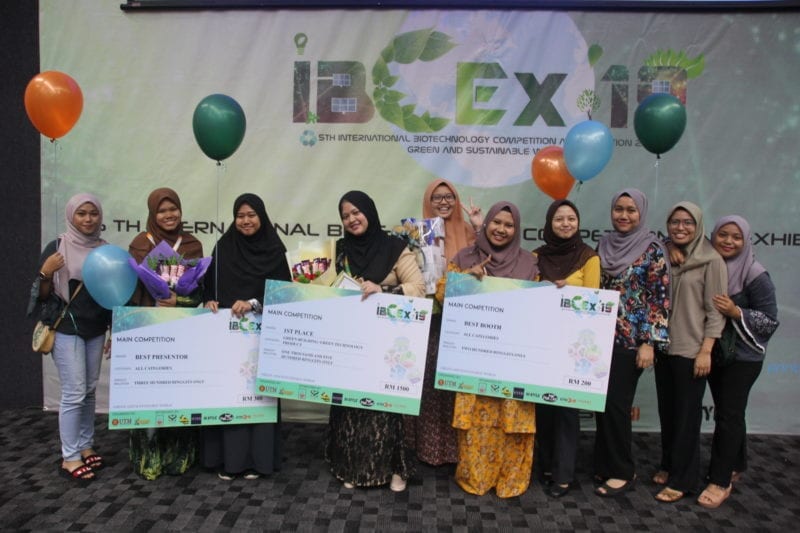Three teams of final year undergraduate students from Department of Biosciences participated in the 5th International Biotechnology Competition and Exhibition (IBCEX) 2019 on 5th & 6th of April 2019. The event was organized by Bioprocess Engineering Student Society (BIOSS), from School of Chemical and Energy Engineering, Univesiti Teknologi Malaysia, Johor Bahru, Johor. The theme for the event was “Green and Sustainable World” and categories opened were Environment/ Waste Treatment/ Biotechnology, Biofuel/ Renewable Energy, and Green Building/ Green Technology Product. This international event was open to all undergraduate students across all sectors not only limited to bioprocess, biomedical, and bioengineering, as long as their innovation was related to the theme. It also involved local and international academicians and representatives from biotechnology companies as the panel of judges. Our Biosciences students won several categories; Best Presenter, Best Booth and 1st Place Green Building/ Green Technology Product category.
The project was led by Nur Fakhira Mohd Asri together with Nuraini Idris, Nurfadillah Zalzalah and supervised by Dr Mohd Farizal Ahmad Kamaroddin. The aim of their project was to reduce the carbon dioxide (CO2) level in a small-office room (lecturer/ science officer room) that has a bad ventilation system using their device named Artificial Tree (Art3). Some office building has been designed without a proper ventilation system (no window or exhaust fan) especially the one with air-conditioned unit. This may lead to the accumulation of CO2 gas in the room to a dangerous level. High concentration of CO2 gas can reduce cognitive performance (sleepiness, stagnant, stale and headaches) which leads to low productivity or performance of the worker. The higher the number of people gather in a room; the more CO2 gas will be accumulated as people would be releasing CO2 during breathing (respiration). The device has been designed for indoor application containing marine microalgae (Nannochloropsis sp.) that will consume CO2 gas (ambient air) and releasing oxygen to its surrounding like a tree. Their study has shown that the device can reduce the CO2 level up to 20% at a certain stage of the cultivation period. They plan to optimize the system by up scaling it from 8 L to 20 L targeting to achieve 40% of CO2 reduction in the future, expecting to achieve outdoor air level (<350 ppm of CO2) using 20L Art3.

